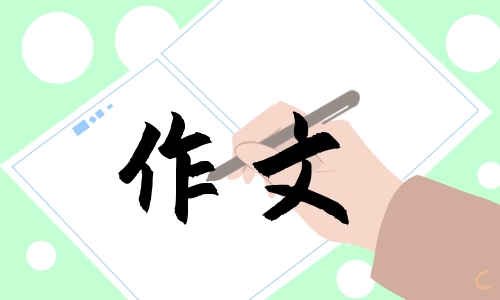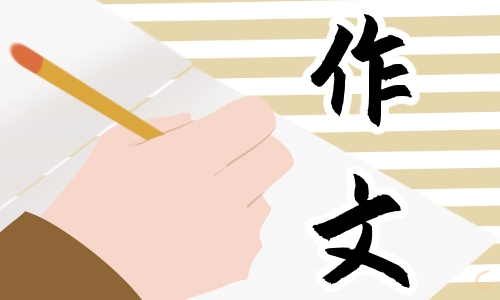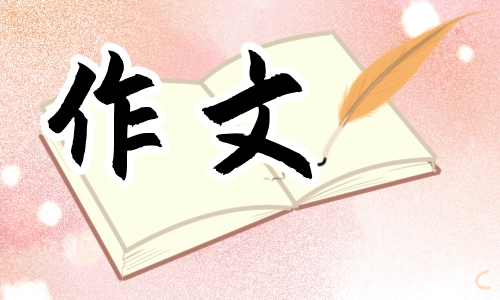英语语法学习一直是英语当中最重要的部分,那学好英语的基础当然是学习好英语语法了,下面是小编给大家带来的小学英语语法汇总,希望能够帮助到大家!
小学英语语法汇总(超精)
一、量词
1. a, an的选择: 元音字母开头的单词用an,辅音字母开头的单词用a.
2. am , is , are的选择: 单数用is , 复数用are. I 用 am , you 用 are.
3. have , has 的选择: 表示某人有某物.单数用has , 复数用have. I ,you 用 have .
4. there is, there are 的选择:表示某地有某物,某人.单数用there is , 复数用there are.
5. some, any 的选择:肯定句用some, 疑问句和否定句用any.
二、形容词的比较级
比较级的句子结构通常是:什么 + 动词be (am , is , are ) + 形容词比较级 + than(比)+ 什么 。
如:I'm taller and heavier than you. (我比你更高和更重.)
An elephant is bigger than a tiger. (一只大象比一只老虎更大.)
形容词的比较级是在形容词的基础上变化而来的,它的变化规则是:
① 一般的直接在词尾加er ,如 tall - taller , strong - stronger ,
② 以e结尾的,直接加r ,如 fine – finer ,
③ 以辅音字母加y结尾的,先改y为i再加er,如funny - funnier
④ 双写最后的字母再加er,如big – bigger, thin – thinner ,hot – hotter
比较的两者应该是互相对应的可比较的东西.
典型错误:My hair is longer than you.(我的头发比你更长.)
比较的两者是我的头发,你(整个人),那么比较的对象就没有可比性.
应该改为:My hair is longer than yours. 或My hair is longer than your hair.
三、人称代词主格、宾格、所有格、所有格代词
人称代词分为主格和宾格,主格和宾格区别:主格和宾格汉语意思相同,但位置不同。例如:I(主格)"我"-- me (宾格)"我"主格在陈述句中通常放句首,宾格通常放在动词后或介词后,也就是说宾格,不放在句首。
比如: I have a new car.( I 主格)
Excuse me (me 宾格)
I ask him to go (him 宾格)
They sit in front of me (me 宾格)
主格(8个):I 我you你 he他 she她 it它 we 我们you 你们they他(她、它)们
宾格(8个):me我 you你 him 他her她 it它 us我们 you你们 them他(她、它)们
所有格是指所属,后面一般跟名词,表示某物属于谁,属于形容词词性。比如:My name is jake. What’s your name?
所有格:my(我的)your(你的)his(他的) her(她的)its(它的)our(我们的)your(你们的)their(她们的、他们的、它们的)
所有格名词,自身是名词属性,指代谁的什么东西,一般前文有指。比如:My name is jake. What’s yours?(yours 指“你的名字”)
名词所有格:mine(我的sth.)yours(你的sth.)his(他的sth.)hers(她的sth.)its(它的sth.)ours(我们的sth.)yours(你们的sth.)theirs(他们的sth. 她们的sth. 它们的sth.)
四、名词
名词有单数和复数两种形式
1、名词的单数:表示一个人或一个事物
2、名词的复数:表示一个人以上的人或事物
名词复数的变化规律如下
1、多数情况下在名词后面加S,s 在清辅音后读【S】
2、以s,x,sh,ch为结尾的词在词尾加es, es读作【iz】
3、以f,fe为结尾的词去掉f或fe加ves,ves读作【vz】
4、以辅音加y结尾的词,变y 为ies
5、以元音加y结尾的词,直接加s
6、不规则变化
a变成e
Man-men woman-women policeman-policemen
Policewoman-policewomen
单复数同形
Chinese-chinese Japanese-japanese
sheep -sheep deer -deer
不规则变化
This 这个these这些(复数)
that那个 those那些(复数)
I我 we我们(复数)
he他 she她 it它 they他、它、她们(复数)
am ,is是 are(复数)
名词所有格
1、 变法:在人名后面加's
记住:'s要译成"的"如:Lucy(名词所有格)Lucy's
2、 如果是2个或2个以上人的名词所有格要在最后一个人名加's
如:Lily and Lucy (名词所有格)Lily and Lucy'S
Lily Lucy and Julia (名词所有格) Lily Lucy and Julia's
3、 以s结尾的名词复数所有格在后面加',eg:students'
五、动词
1、动词现在分词
① 一般的直接在后面加上ing , 如doing , going , working , singing , eating
② 以e 结尾的动词,要先去e再加ing ,如having , writing
③ 双写最后一个字母的(此类动词极少)有:running, swimming , sitting , getting
句子结构:主语+系动词(am is are/was were)+doing+状语,表示正在做某事,或过去正在做某事
如:I am going to school. You are sitting in my seat!
2、动词过去式
动词的过去式的构成规则有:
A,规则动词
① 一般直接在动词的后面加ed:如 worked , learned , cleaned , visited
② 以e结尾的动词直接加d:如 lived , danced , used
③ 以辅音字母加y结尾的动词要改y为i再加ed(此类动词较少)如 study – studied carry – carried worry – worried (注意play,stay不是辅音字母加y,所以不属于此类)
④ 双写最后一个字母(此类动词较少)如 stopped
B,不规则动词(此类词并无规则,须熟记)小学阶段要记住以下动词的原形和过去式:sing – sang , eat – ate , see – saw , have – had , do – did , go - went , take - took , buy - bought , get - got , read - read ,fly - flew , am/is - was , are - were , say - said , leave - left , swim - swam , tell - told , draw - drew , come - came , lose - lost , find - found , drink - drank , hurt - hurt , feel - felt
动词过去式表示动作过去发生,一般用于过去式
六、句子
1.肯定句:是指用肯定的语气来陈述的句子
如:I'm a student.
She is a doctor.
He works in a hospital.
There are four fans in our classroom.
2,否定句:含有否定词或表示否定意义词的句子,
如:I'm not a student.
He does not (doesn't) work in a hospital.
There are not (aren't) four fans in our classroom.
否定句主要是在肯定句的基础上加上了否定词 "not".有动词be的句子则"not"加在be后面,可缩写成"isn't,aren't",但am not 一般都分开写.没有动词be的句子则要先在主要动词的前面加上一个助动词(do,does,did),然后在它后面加上"not",你也可以把它们缩写在一起如"don't , doesn't , didn't ).这三个助动词要根据人称和时态来选择,其中"does"只用于一般现在时主语是第三人称单数的情况,而"did"只用于一般过去时,不论主语是什么人称和数,都用"did" .
系动词否定:am not/ isn’t, aren’t
动词否定:don’t+动词/doesn’t+动词/didn’t+动词
3,一般疑问句:是指询问事实的句子,此类句子必须用"yes",或"no"来回答.
如:Are you a student ?Yes, I am. / No, I'm not.
Is she a doctor? Yes, she is. No, she isn't.
Does he work in a hospital ?Yes, he does. / No, he doesn't.
Did you watch TV yesterday evening? Yes, I did. / No, I didn't.
句子结构:系动词提前+主语+补语
助动词提前+主语+动词+状语
助动词要根据人称和时态来选择,其中"does"只用于一般现在时主语是第三人称单数的情况,而"did"只用于一般过去时,不论主语是什么人称和数,都用"did" .一般疑问句有个重要的原则就是问和答要一致,即问句里的第一个单词(助动词)和简略答句里的这个词是一致的.
4,特殊疑问句:以特殊疑问词(what , where , who , which , when , whose , why , how等)开头引导的句子.此类句子应该问什么就答什么,不能用"yes ,no"来回答.如:
What is this?
Where are you going?
Who played football with you yesterday afternoon?
When do you usually get up?
Why do you like spring best ?
How are you?
特殊疑问词+系动词+主语
特殊疑问词+助动词+主语+动词+状语
Who+系动词/动词
特殊疑问词:what (什么) who (谁) where (哪里) whose (谁的) why(为什么)when(什么时候)which(哪一个)how old (多大)how many (多少)how much(多少钱) how tall(多高), how long(多长), how big(多大), how heavy(多重)
例句:How many pencils do you have ?
How many girls can you see ?
how many 用来提问可数名词的数量,主要有以上三种搭配,
How many + 名词复数 + do you have 你有多少……
How many + 名词复数 + can you see 你能看见多少……
How many + 名词复数 + are there… 有多少……
七、缩略
1、简缩形式的变法:把倒数第二个字母,通常是元音字母变成' 但are除外,are要把a打成' 。例如:he is=he's they are=they're
2、简缩形式和完全形式的汉语意思相同。
3、把完全形式变成简缩形式时,一定要注意第一个字母的大小变化。例如:What is =What's
4、记住一个特殊变化;let's =let us 让我们(不要把' 变成i)
5、记住:this is 没有简缩形式this's(错误)
6.常见的缩略形式:
I'm=I am he's=he is she's=she is they're=they are you're=you are there's=there is they're=they are
can't=can not don't=do not doesn't=does not
isn't=is not aren't=are not let's=let us
won't=will not I'll=I will wasn't=was not






